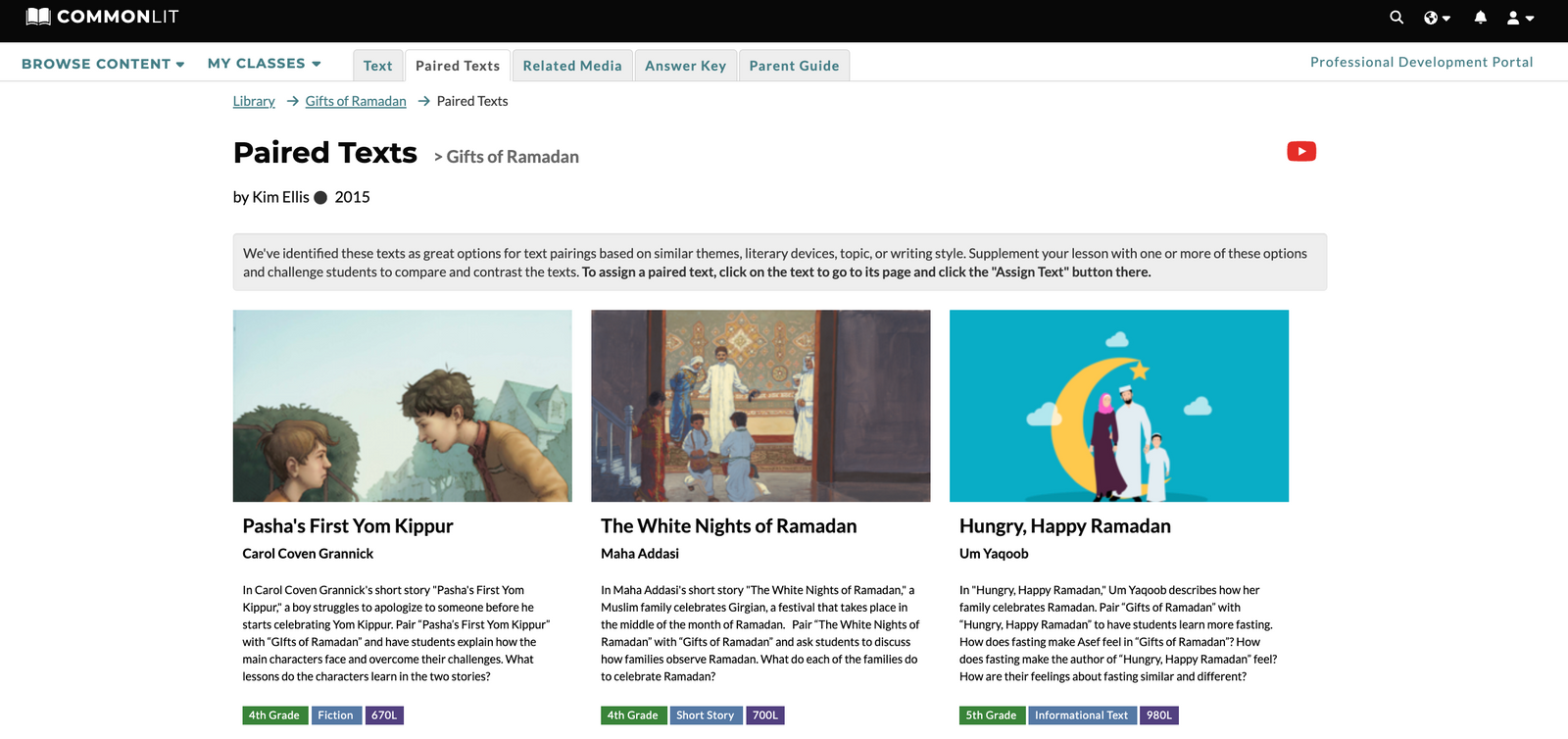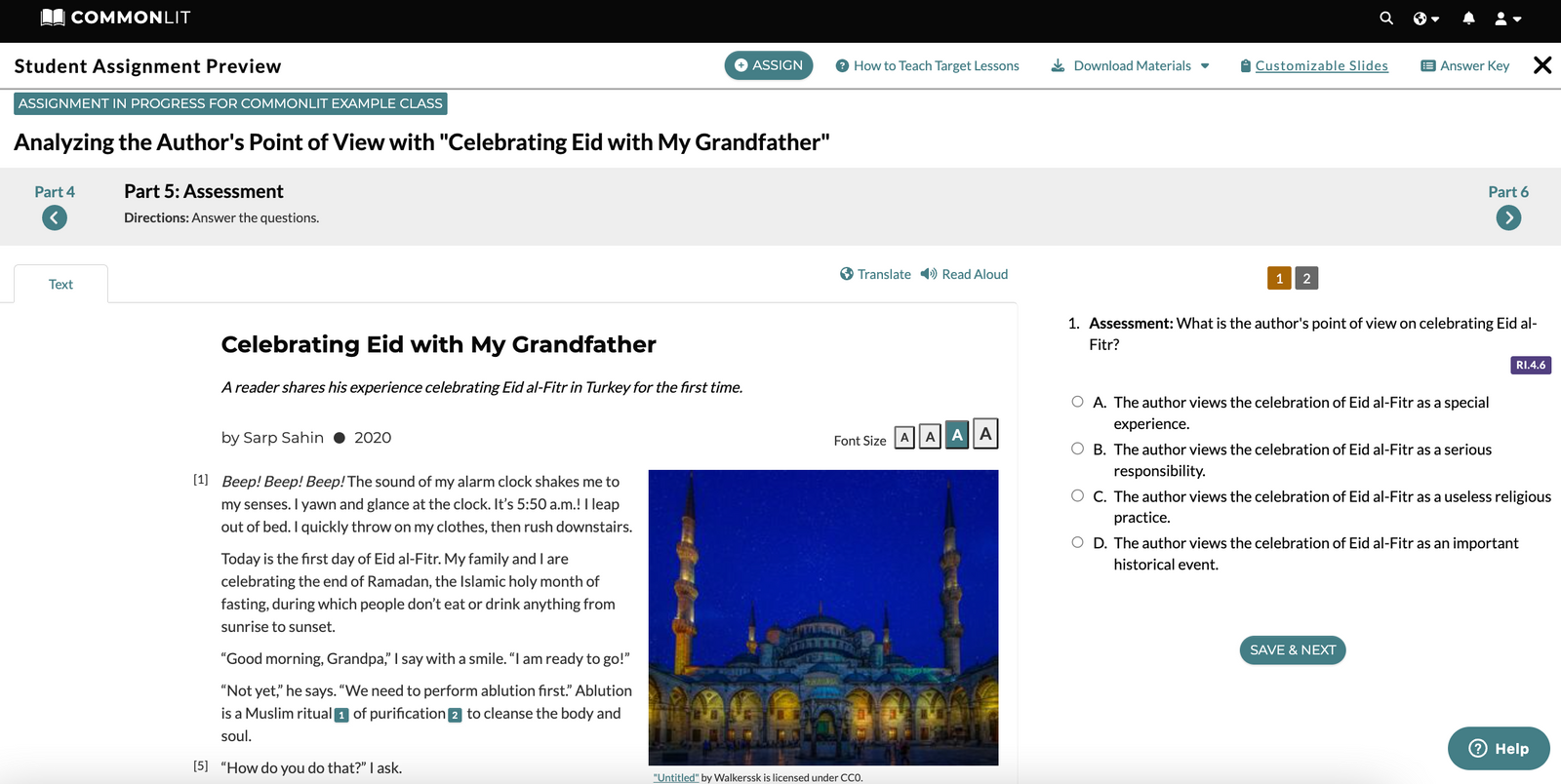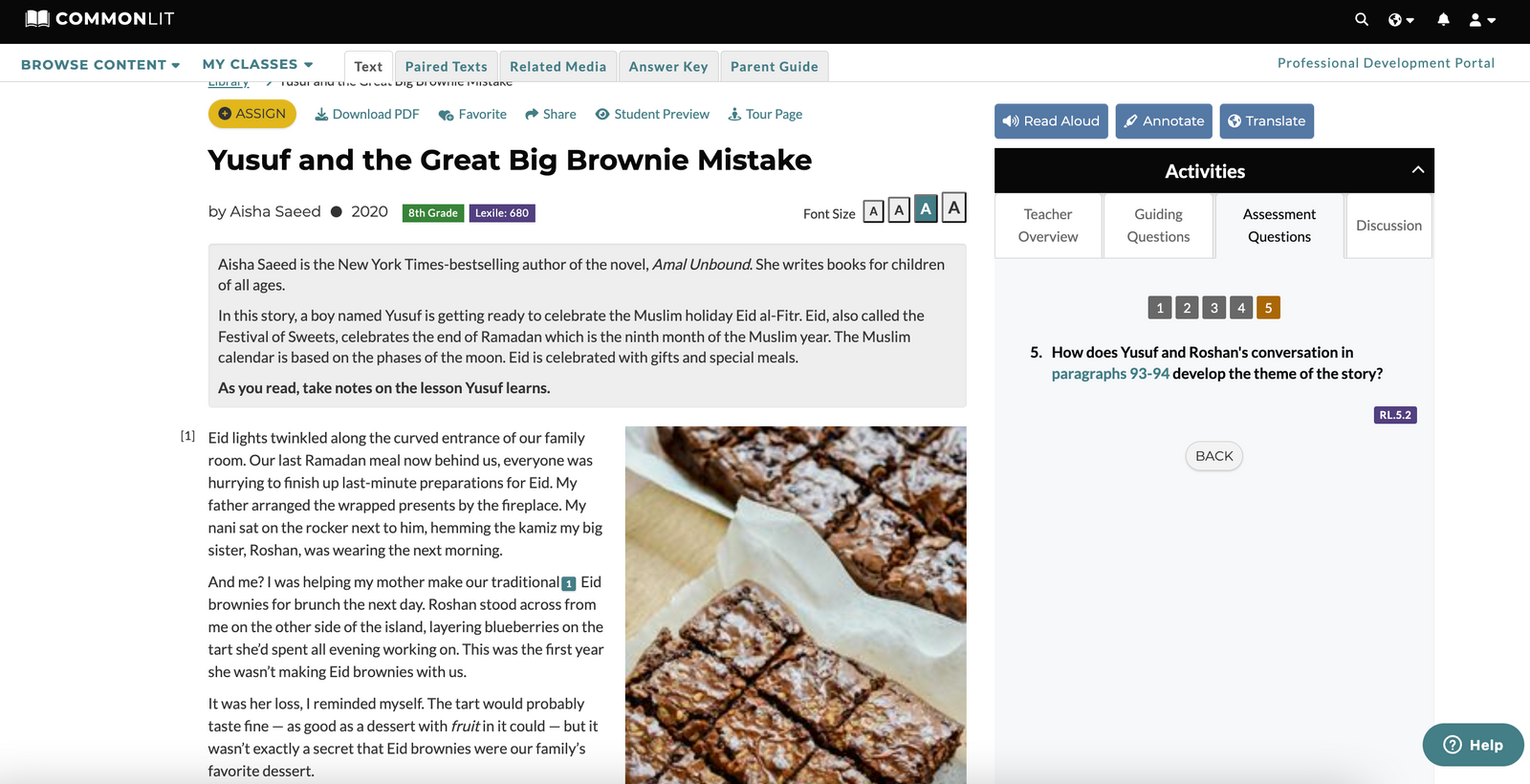 Elementary Classrooms
Secondary Classrooms
7 Texts to Celebrate Ramadan in Your Classroom
Elementary Classrooms
Secondary Classrooms
7 Texts to Celebrate Ramadan in Your Classroom
CommonLit is committed to providing students with a wide range of texts that showcase cultures from all over the world. In these seven texts, students will learn about the traditions and celebrations of Ramadan. These texts serve as a great opportunity for students to see themselves reflected in the literature they are reading in class, learn about another culture they are unfamiliar with, or understand a holiday their classmates celebrate.
Ramadan is a holiday celebrated during the 9th month of the Muslim year. During this time, strict fasting is observed from sunrise to sunset. The end of Ramadan is celebrated with Eid al-Fitr, a three day festival to celebrate the breaking of the fast.
“The White Nights of Ramadan” by Maha Addasi (4th Grade)
Maha Addasi is an author who grew up in Kuwait and now lives in Virginia. In this short story, a Muslim family celebrates Girgian, a festival during the middle of Ramadan. Noor, a young Muslim girl, prepares nut brittle with her family to share with the less fortunate.
After reading, engage students with Discussion Question 1, “Ramadan is a holiday that is about spending time with family and helping those in need. Describe a holiday that you celebrate that is similar. What is the holiday and how do you celebrate it?”
“Gifts of Ramadan” by Kim Ellis (4th Grade)
In this short story, a young boy named Asef celebrates the first day of Ramadan with his family. Asef is old enough to begin fasting, which his mom explains is very difficult but important. At school, Asef shares about his culture and the purpose of Ramadan with his classmates. Later, Asef gets a present from his family for making it through his first day of fasting.
Pair this story with “Pasha’s First Yom Kippur,” a text about a boy struggling to apologize to someone before he starts celebrating Yom Kippur. Have students explain how the main characters face and overcome their challenges. What lessons do they learn?

“Celebrating Eid with My Grandfather” by Sarp Sachin (4th Grade)
In this memoir, a 13-year-old boy from Texas shares his experience celebrating Eid al-Fitr with his grandfather in Turkey. Sachin learns how to perform ablution before going to Eid prayer and feels connected to his grandfather in a new way. This text is also available as a Target Lesson to teach students how to analyze the author’s point of view.

After reading, show students the video “What is Eid Al-Fitr? Ramadan and the Festival of Breaking the Fast” from the Related Media tab. Ask students to share new information they learn about Islam, Ramadan, and Eid from the video. How did the video improve their understanding of the text?
“Hungry, Happy Ramadan” by Um Yaqoob (5th Grade)
In this informational text, Um Yaqoob explains how their family celebrates Ramadan in Oman. Yaqoob talks about the traditions and customs associated with Ramadan. The story also includes the narrator’s perspective on why Ramadan is both a “hungry and happy” time.
As students read, have them take notes on how people celebrate Ramadan. Then, students can use their annotations to answer Assessment Question 5, “According to the text, why do people fast during Ramadan?”
“First Eid in America” by Kinza Yasar (5th Grade)
Yasar was born in Pakistan and moved to the United States with her family when she was a teenager. In this short story, she writes about a girl named Farzeen who is celebrating her first Eid in the United States. At first, Farzeen feels lonely and bored, until she meets new neighbors she can share the holiday with despite their different cultural backgrounds.
Use Discussion Question 2 to spark a conversation after reading. Ask students, “Farzeen’s first Eid in America is special because she celebrates it with people who are different from her. Why do you think she enjoys celebrating Eid with people who are different? Have you ever shared a holiday with people who were different from you? If you have not, what is a holiday tradition you would like to share?”
"Yusuf and the Great Big Brownie Mistake” by Aisha Saeed (8th Grade)
In this short story, a boy named Yusuf is getting ready to celebrate Eid al-Fitr, also known as the Festival of Sweets. Yusuf is tasked with making brownies for the celebration, but accidentally burns the tasty treats.
This is a great text for thinking about text structure, including how certain events foreshadow the problem and contribute to the theme. Ask students to delve into the theme of the text by answering Assessment Question 5, “How does Yusuf and Roshan’s conversation in paragraphs 93-94 develop the theme of the story?”

“Ramadan” by Kazin Ali (10th Grade)
Ali is a writer and professor born in the United Kingdom to Muslim Indian parents. In this poem, the speaker considers the effects and meaning of fasting during Ramadan. The speaker feels that the repetitive ritual of fasting is difficult but forces them to view the world in different, important ways.
Show students the video “The Struggles Of A Ramadan Fast (In A Non-Muslim Office).” Ask students, what are some of the challenges of fasting around people who are not observing Ramadan? How are the message and tone of the video and poem similar and how are they different?
Next Steps
Continue teaching students about diverse holidays with our thematic mini unit on holidays and our Text Set on cultures around the world.
Interested in learning more about CommonLit? Sign up to attend a webinar.

